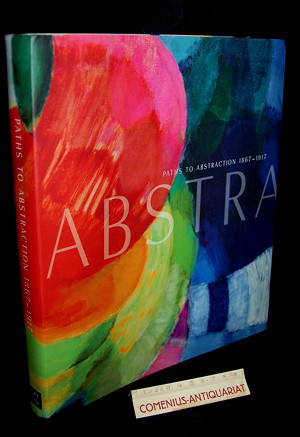| Maloon, Terence [ed.], Abstraction. Paths to abstraction, 1867-1917. Sydney: Art Gallery of New South Wales, 2010. 295 Seiten mit Abbildungen, Literaturverzeichnis und Register. Flexibler Pappband (gebunden). 4to. Maloon Terence ed | Kunstgeschichte | Kunstausstellung | Ausstellungskatalog | Exhibition Catalogue | Abstrakte Malerei |  |
| | |

One answer is that the conventions of abstraction had evolved over such a long time and were so thoroughly embedded in the avant-garde movements of the late 19th and early 20th century, that the advent of abstract art seemed inevitable; abstraction was considered synonymous with modern art.
Far from breaking links to prior avant-garde movements, as this book argues, abstraction arose directly from a tradition of speculation about the nature of art and of aesthetic experience.

